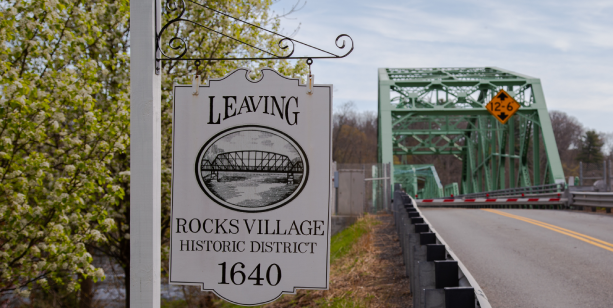Deck specifications called for design live loading of AASHTO HS-25 vehicle plus impact. An environmental durability factor was applied to material properties to account for degradation over time. “Like any material there is always a small degree of material scatter,” Reeves says. “We account for those deviations with statistical reduction factors.” Panel strain under full dead and live load was calculated not to exceed 20 percent of FRP’s ultimate capacity. Strain under dead load alone was not permitted by the client to exceed 10 percent. The deck system was designed for a minimum fatigue life of 2,000,000 load cycles. Thermal loading for panels accounted for a temperature differential of 100 degrees Fahrenheit. With L defined as the distance between the centreline of adjacent girders, deck deflection due to live loads plus impact was limited to L/500. “The relative stiffness of our fiberglass material makes deflection the driving factor in deck sizing with FRP,” says Reeve. “We analysed different loads and conditions, but the influence of deflection on sizing is greater than all other design parameters. Because of this unique aspect, FRP bridges and bridge decks are built to safety and strength factors much higher than that of conventional material.” The FRP panels, weighing just 5,000 pounds each, were delivered to the job site in sequential order. “With a truss bridge there isn’t room to navigate a crane,” says Reeve “FRP allows the contractor to start at one end of the bridge moving, positioning and setting the panels with nothing more than light equipment.”
Shear studs welded to the top of the beam connect panels. The FRP panels are then joined together by welding steel edge members. “This was a cold weather installation,” explains Reeve referring to the joining method used for Rock’s Village. “Traditionally FRP panels are joined by adhesive bonding.” Following installation the deck received a polymer concrete overlay versus asphalt. Thinner and lighter, the overlay met bridge weight restrictions and helped minimize dead load. “As with any material, FRP included, reflective cracking of the wear surface is always a concern,” Reeve says. “With the polymer concrete overlay we recommended a control joint be used in the overlay surface and sealed, otherwise it may need to be redone if reflective cracking does occur. New polymer concretes are being introduced that offer higher elongation as a means of overcoming this problem which is inherent on all types of bridge decks.”


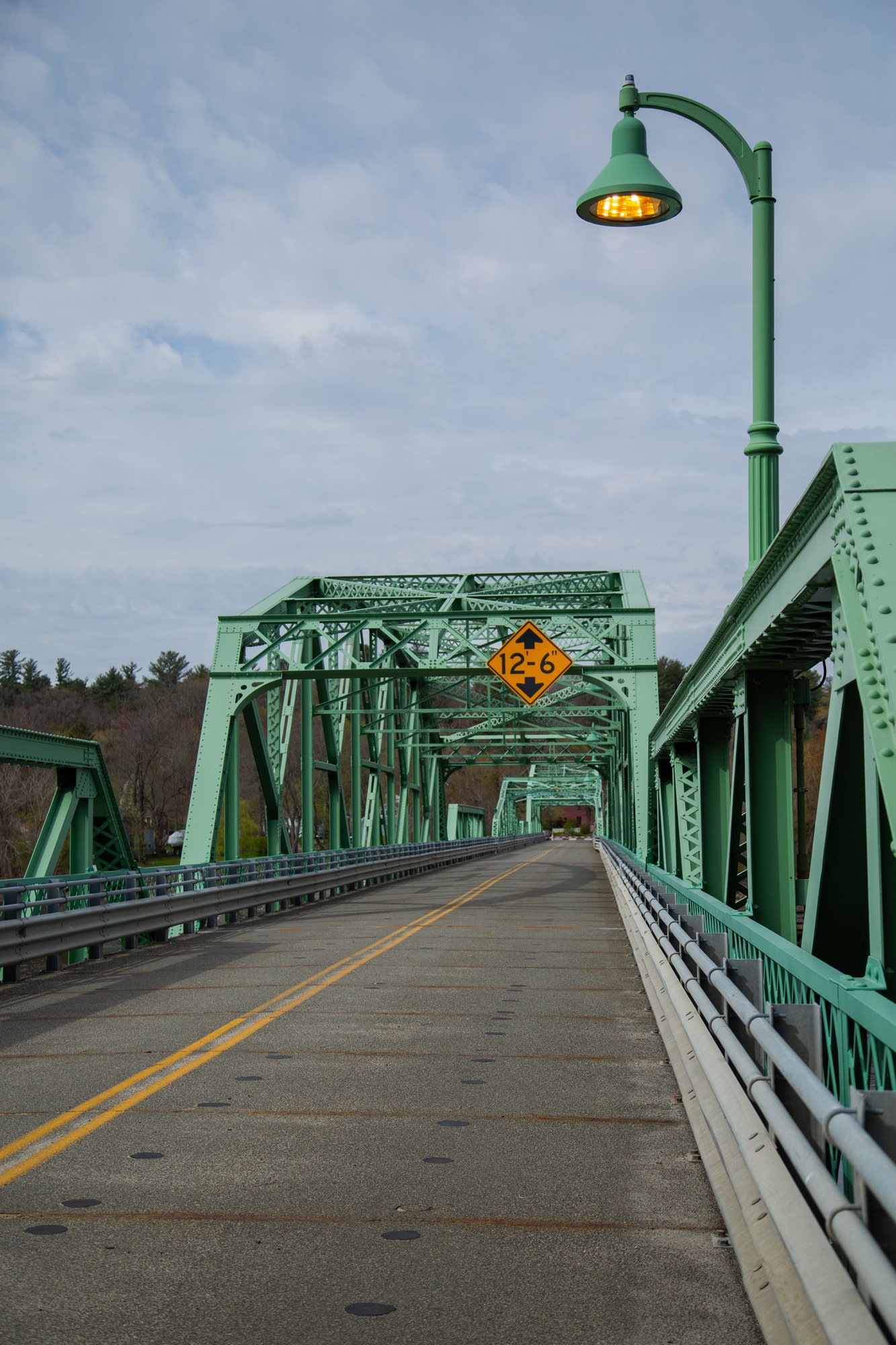
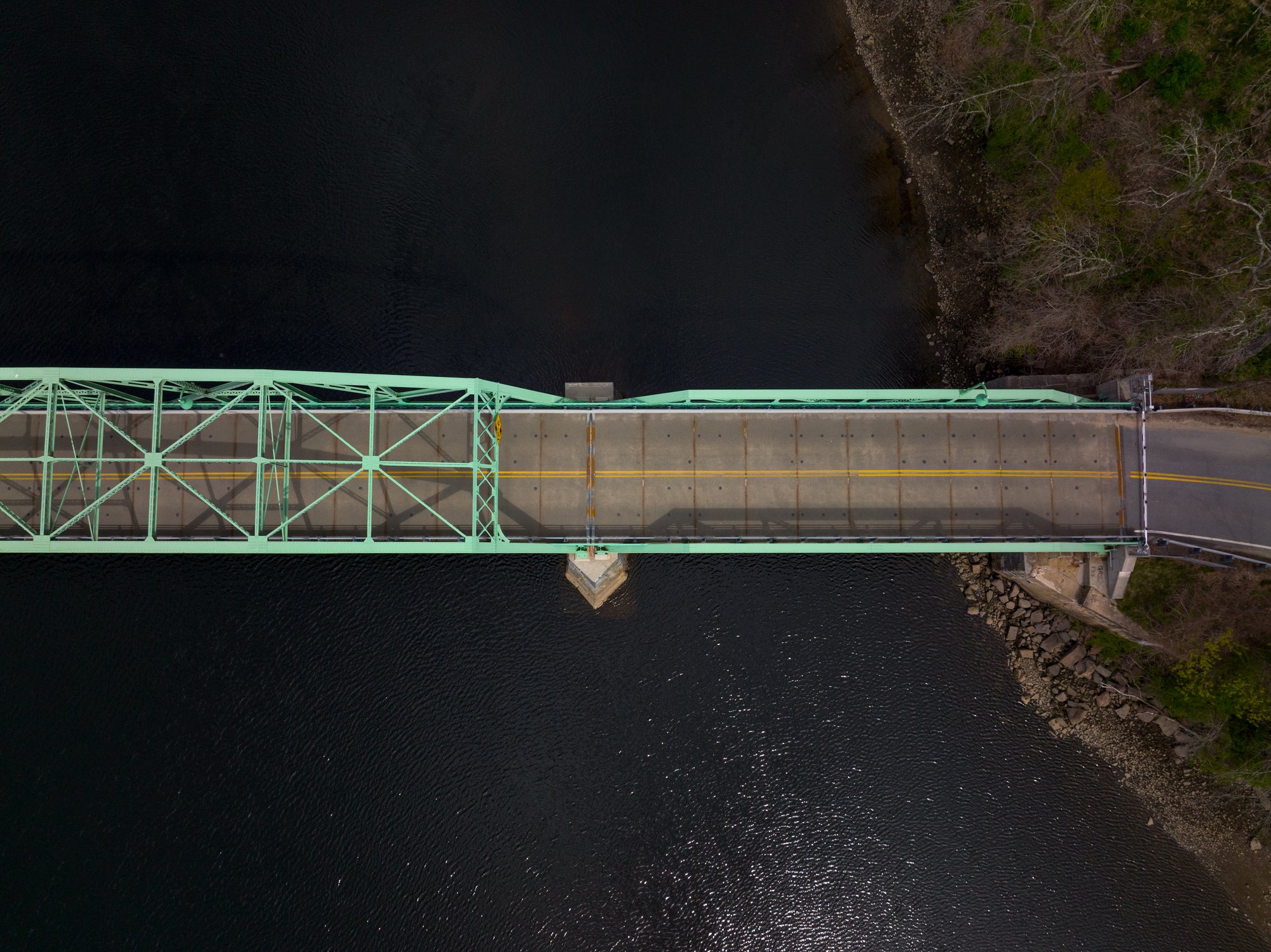
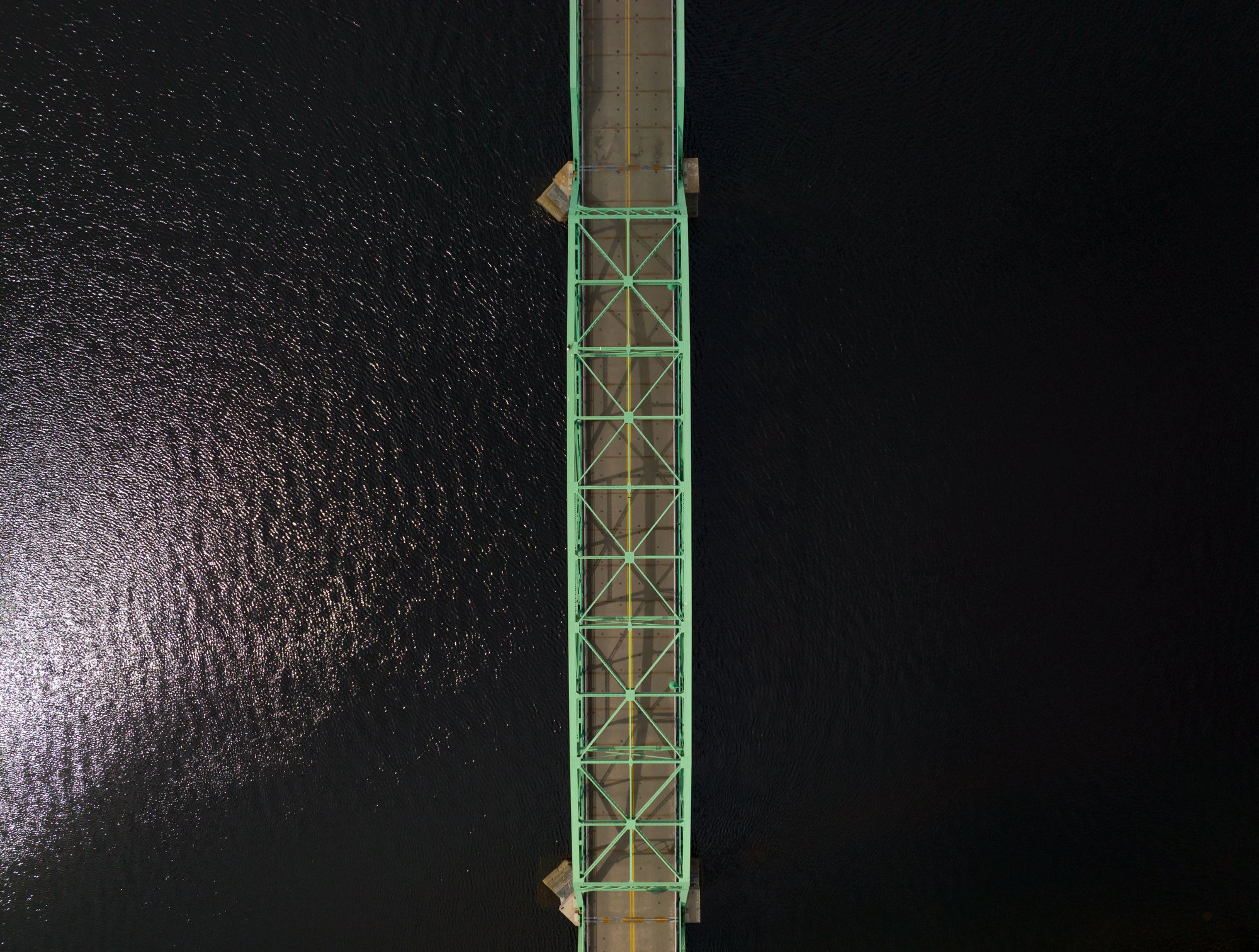
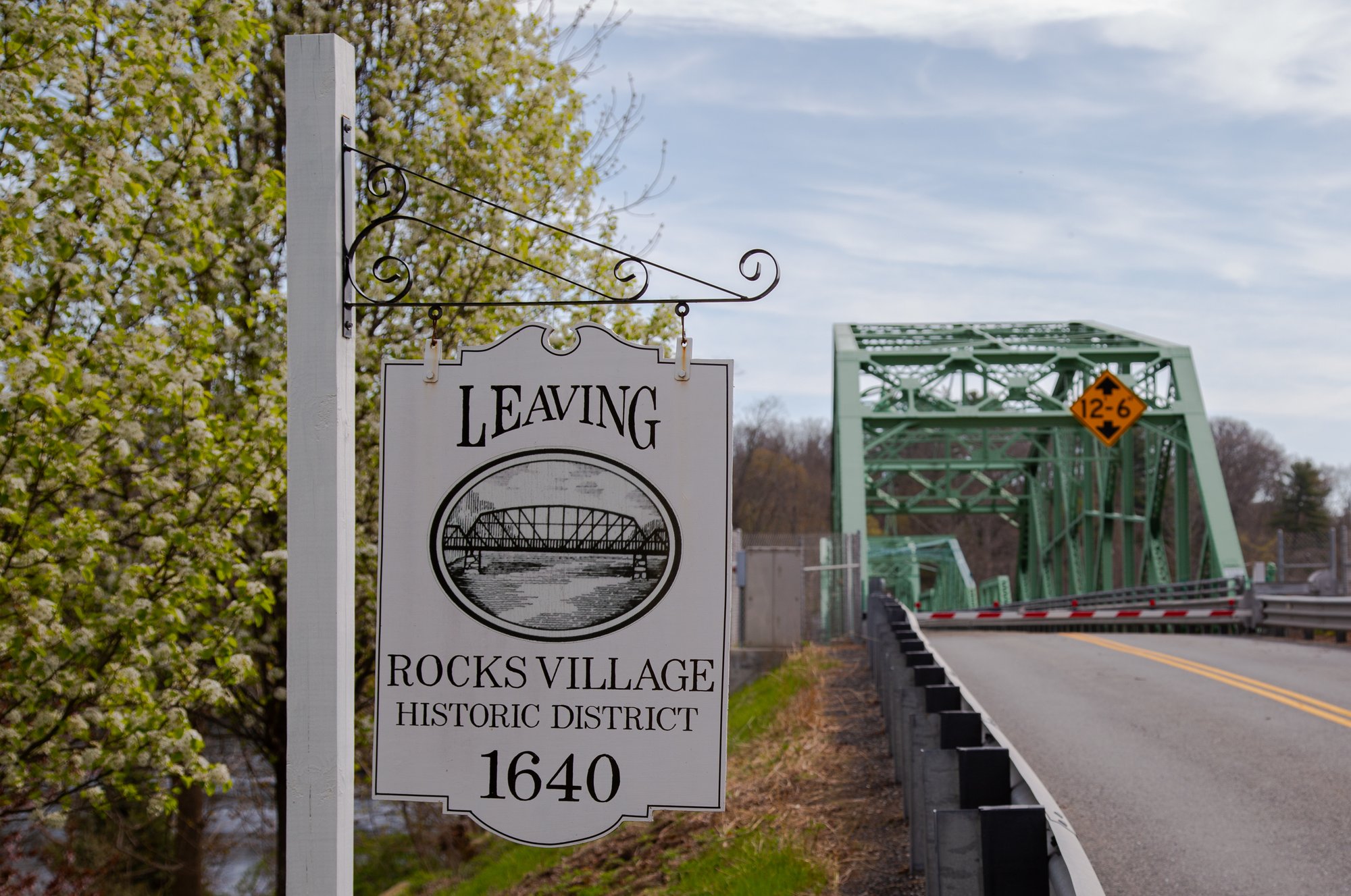
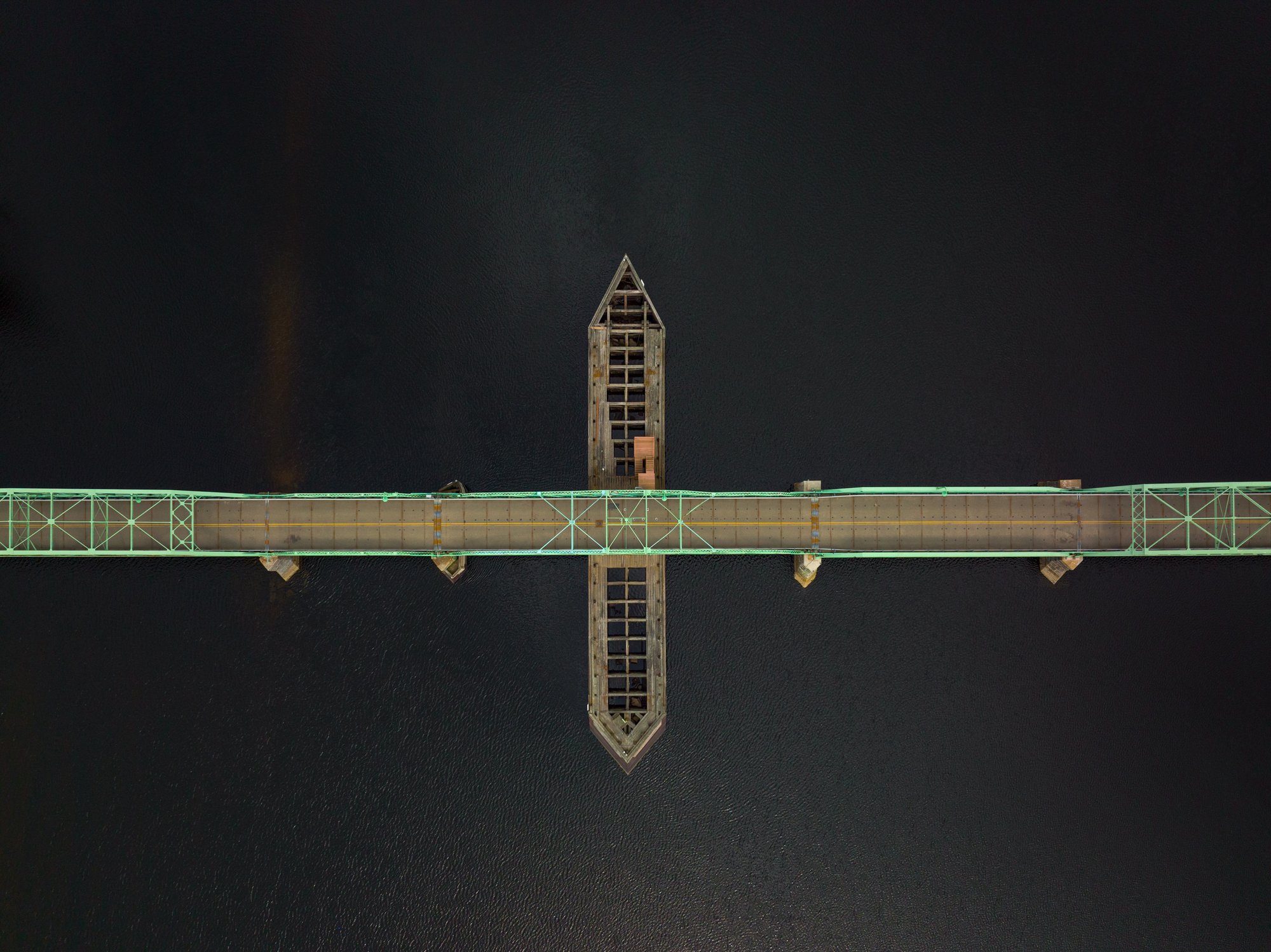

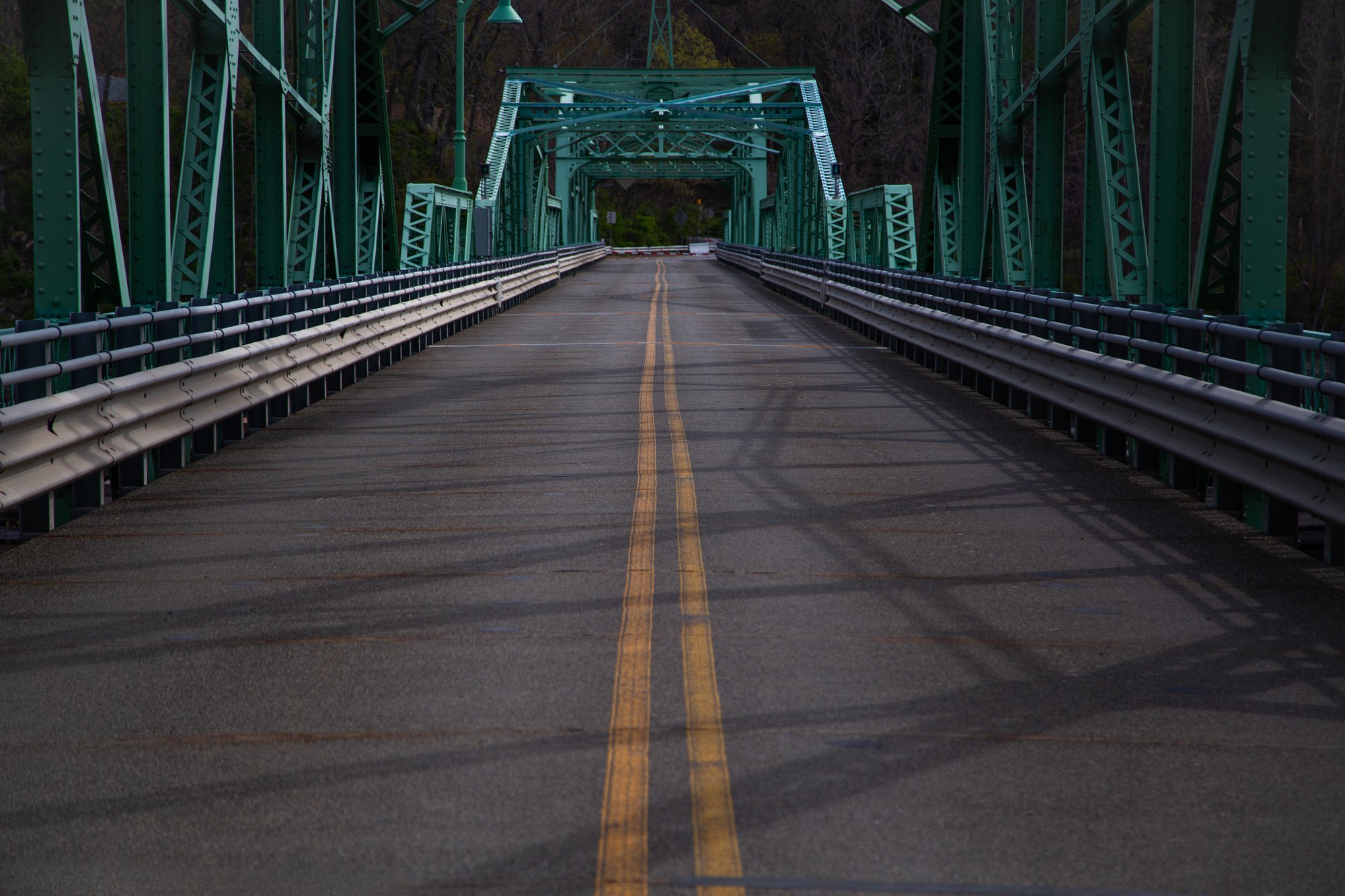
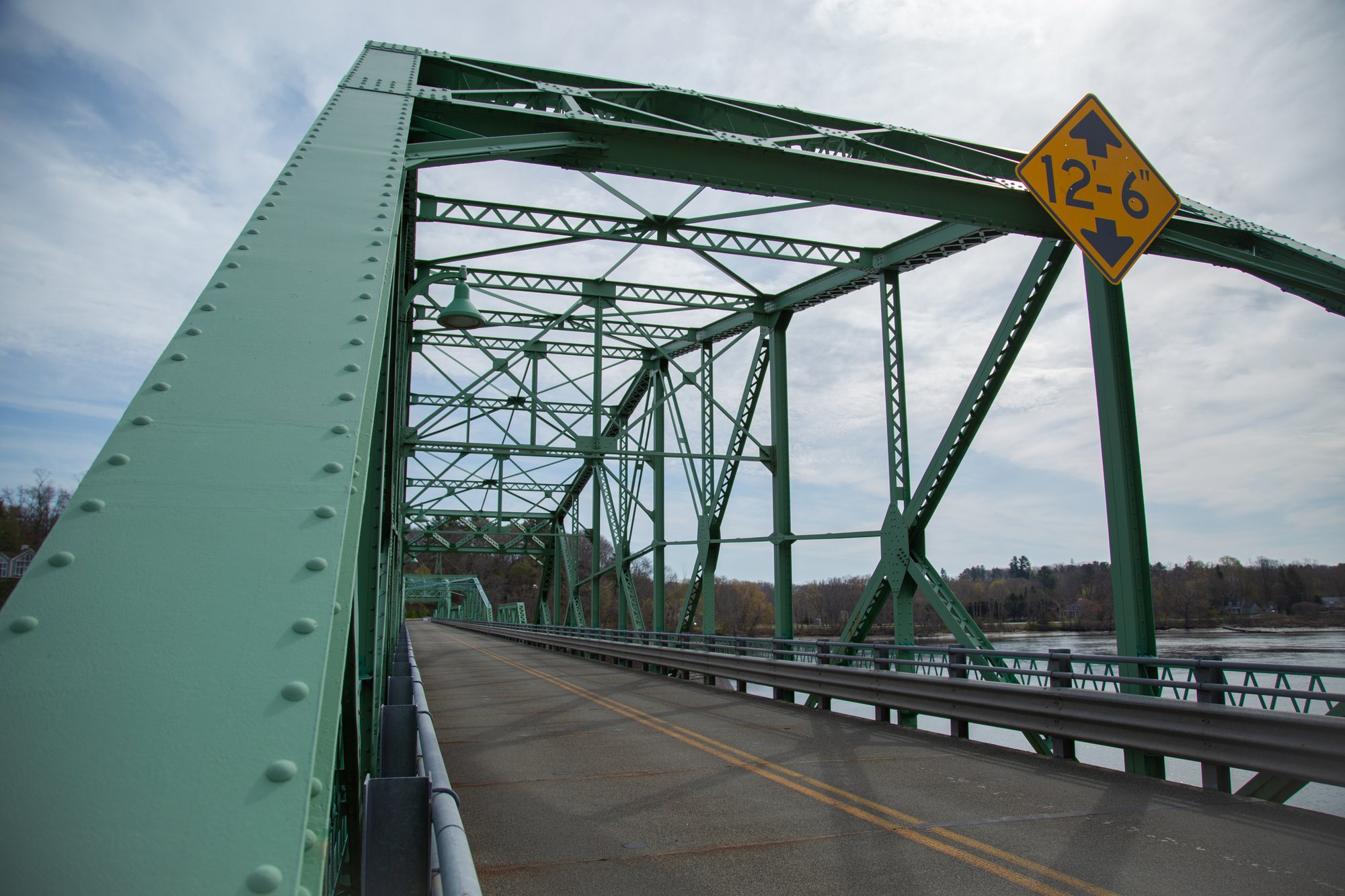
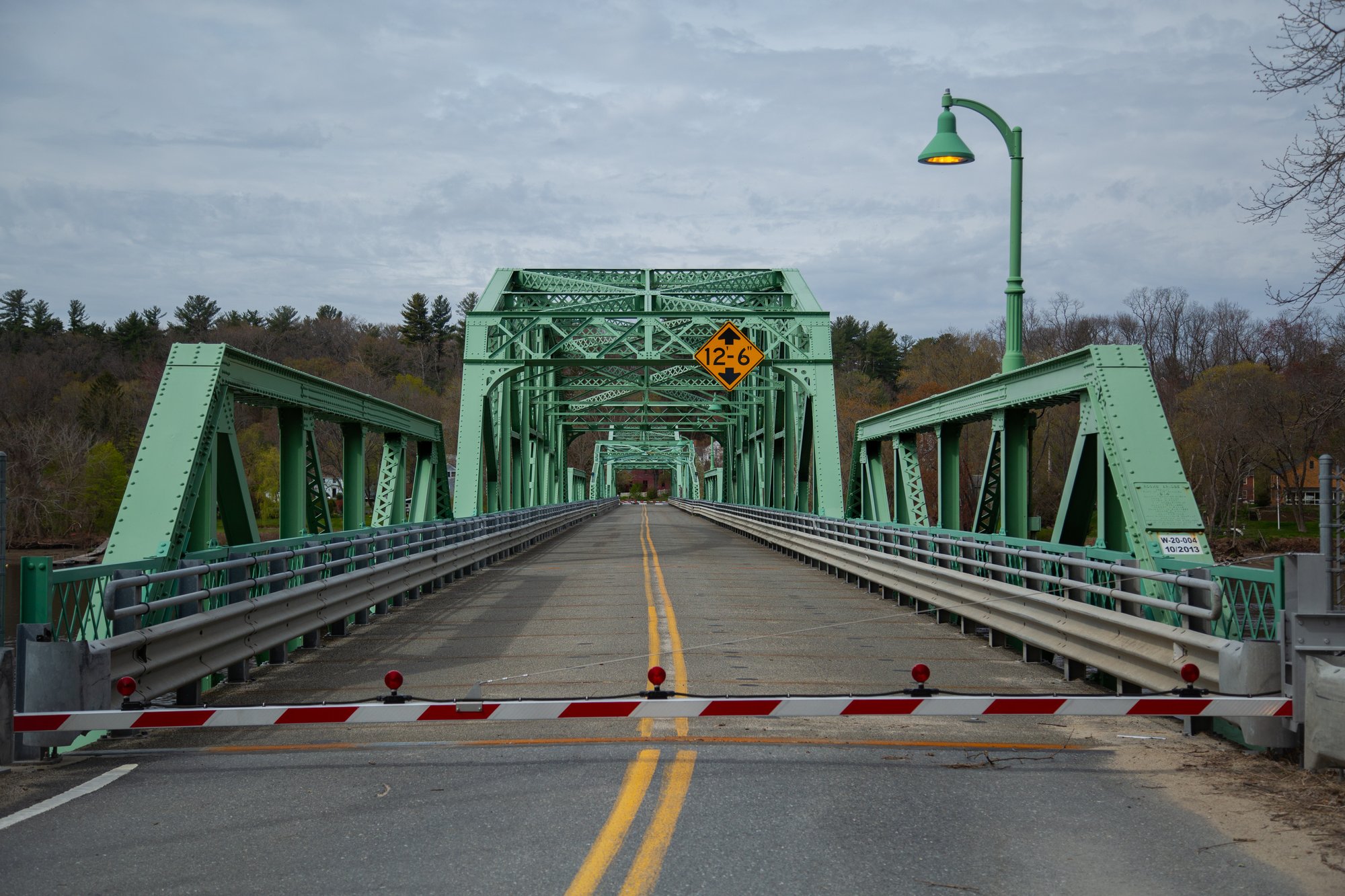
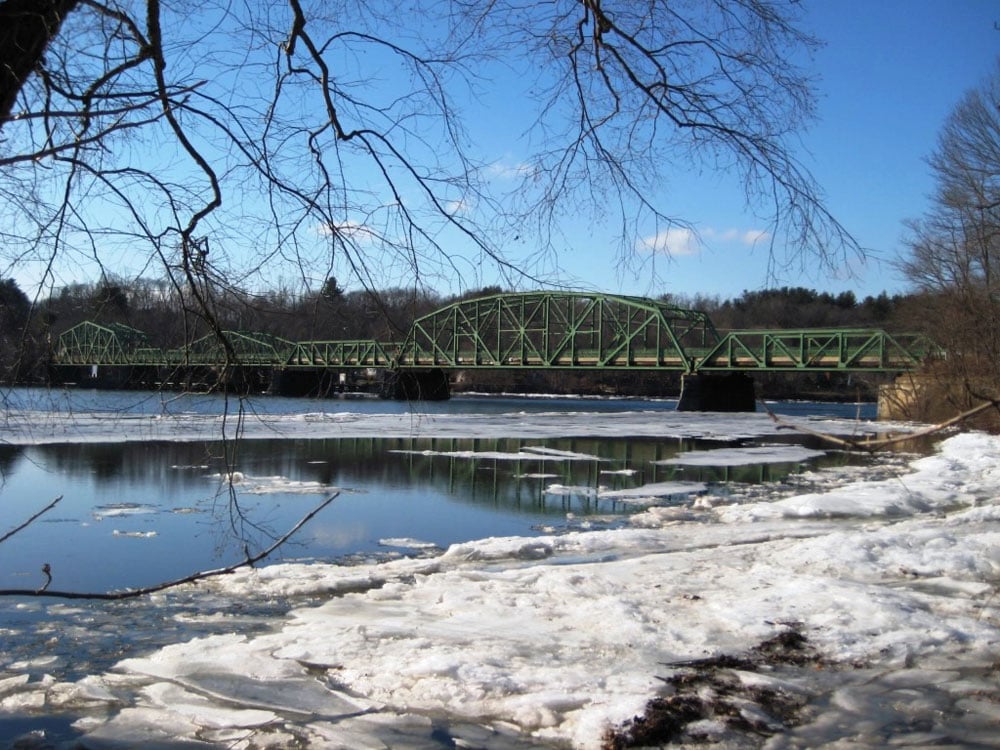
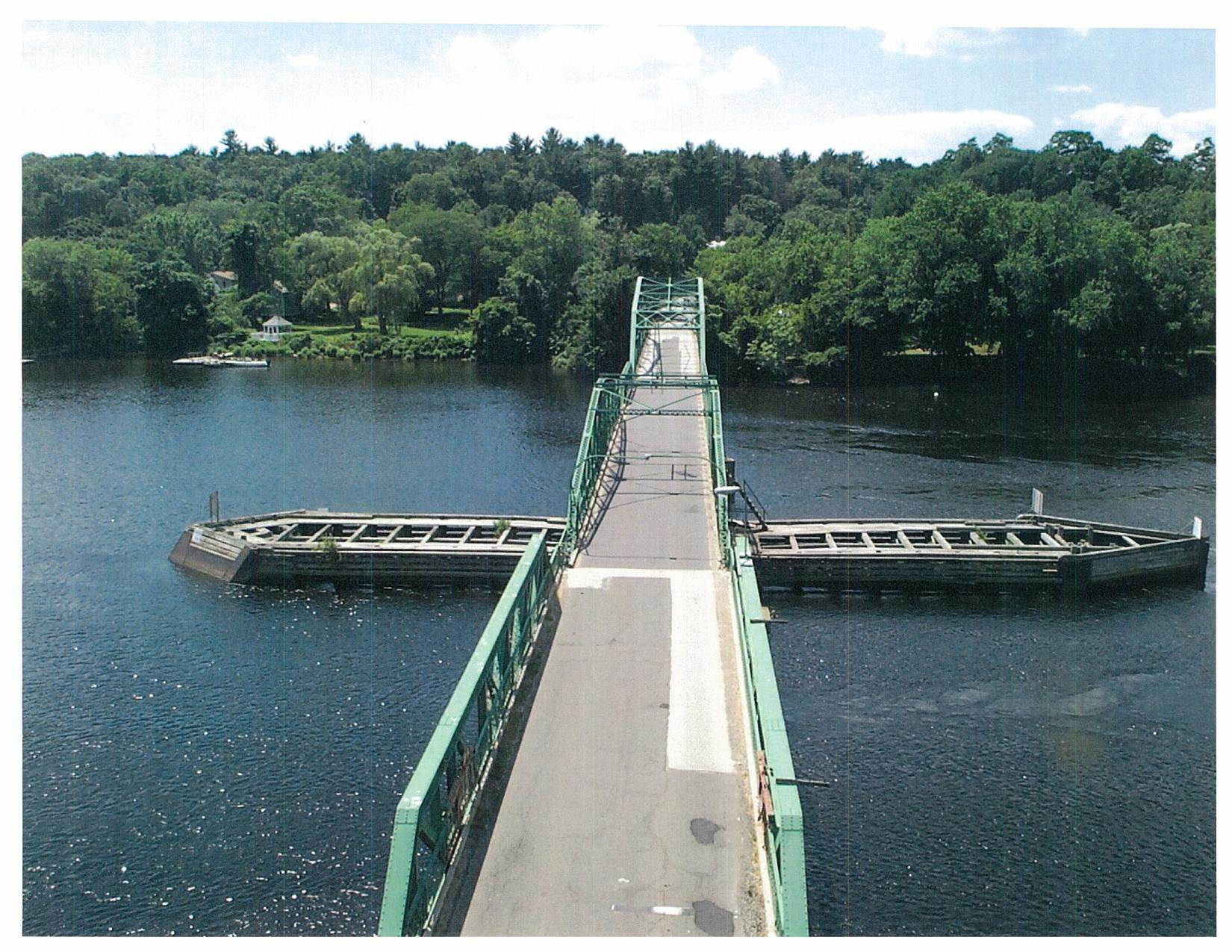
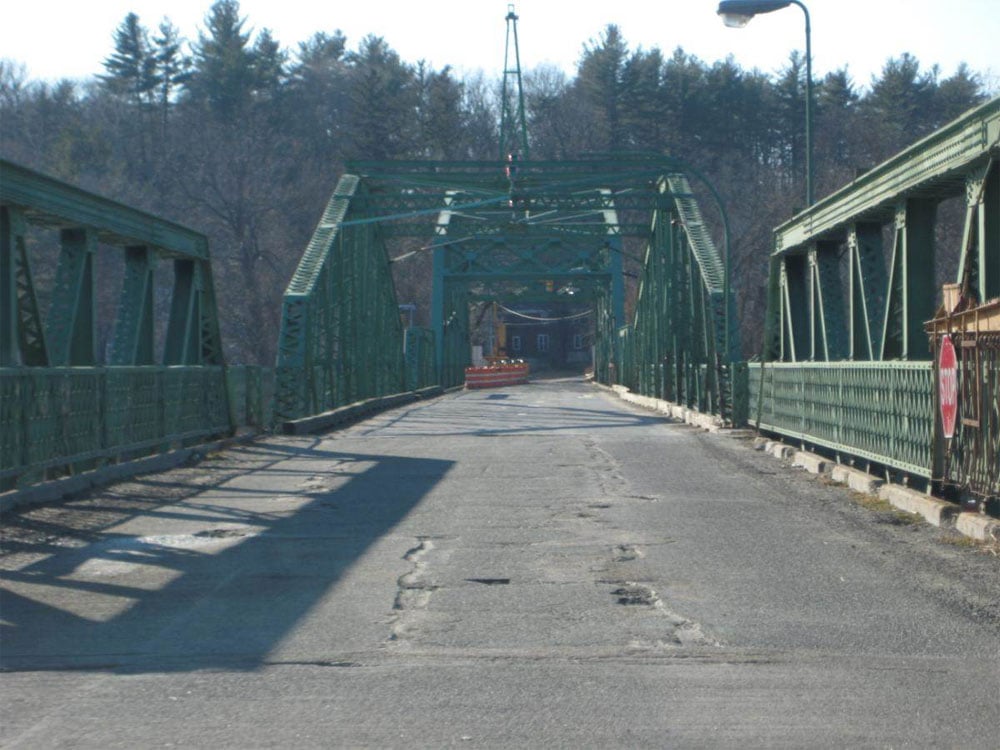
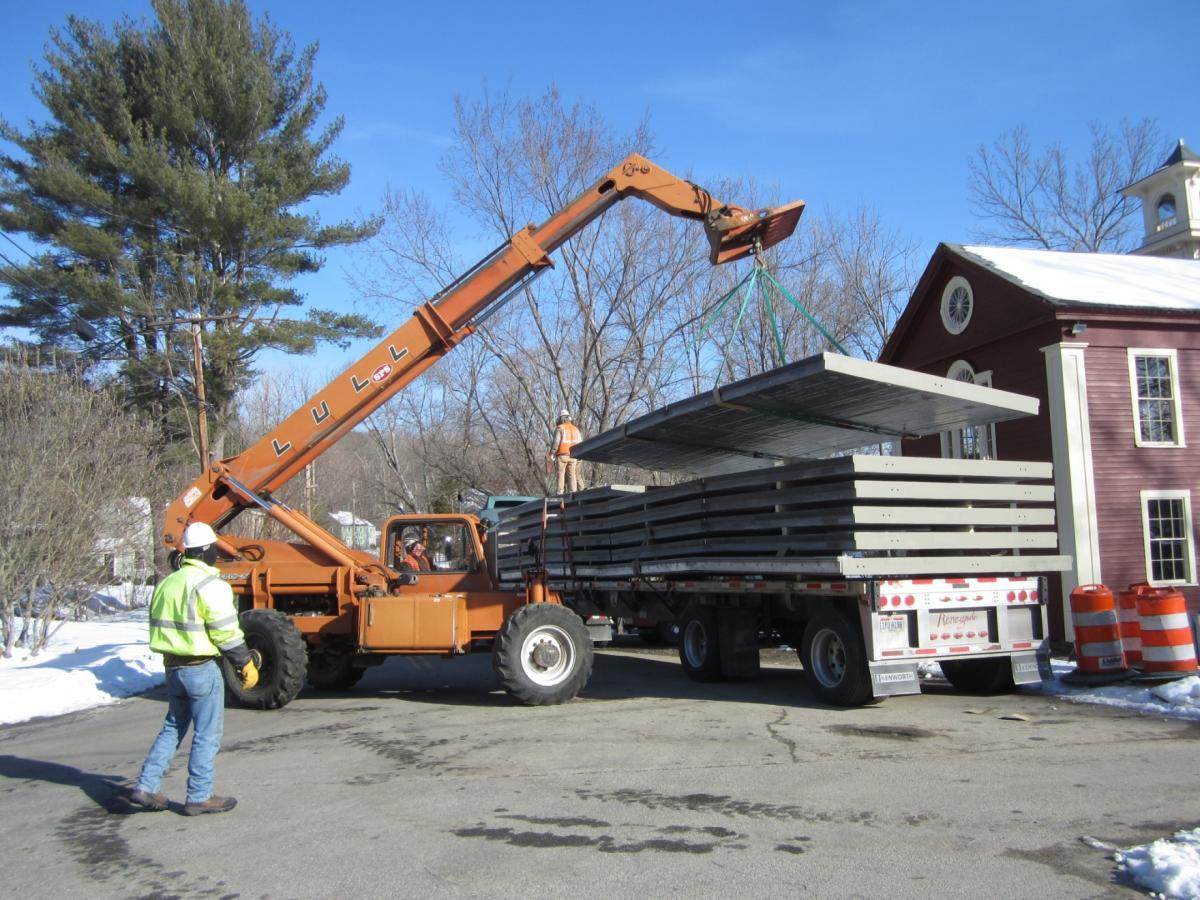
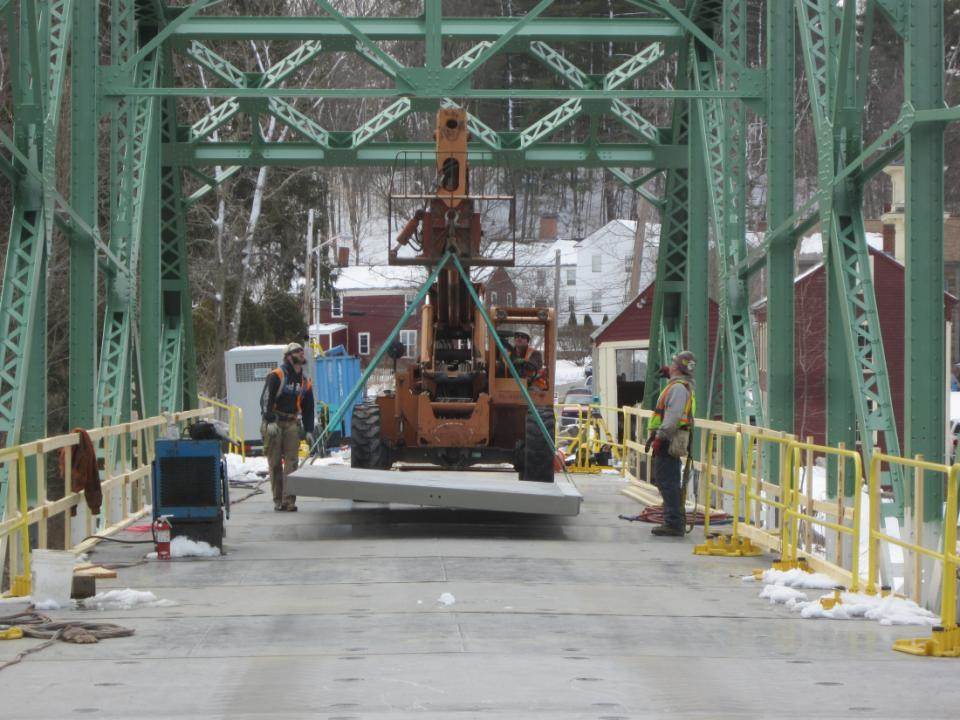
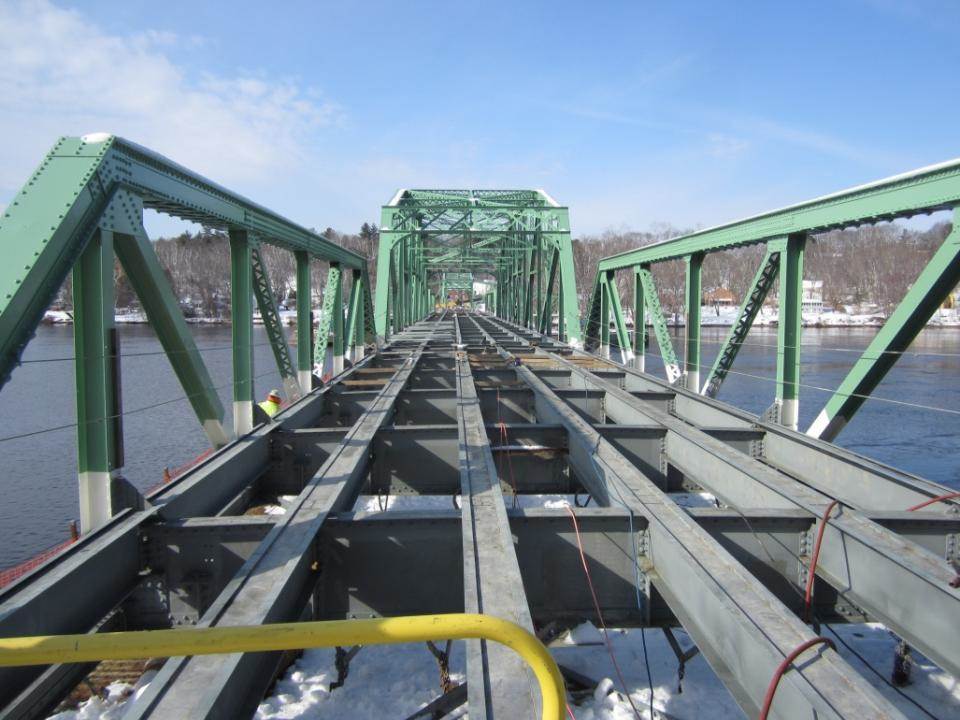
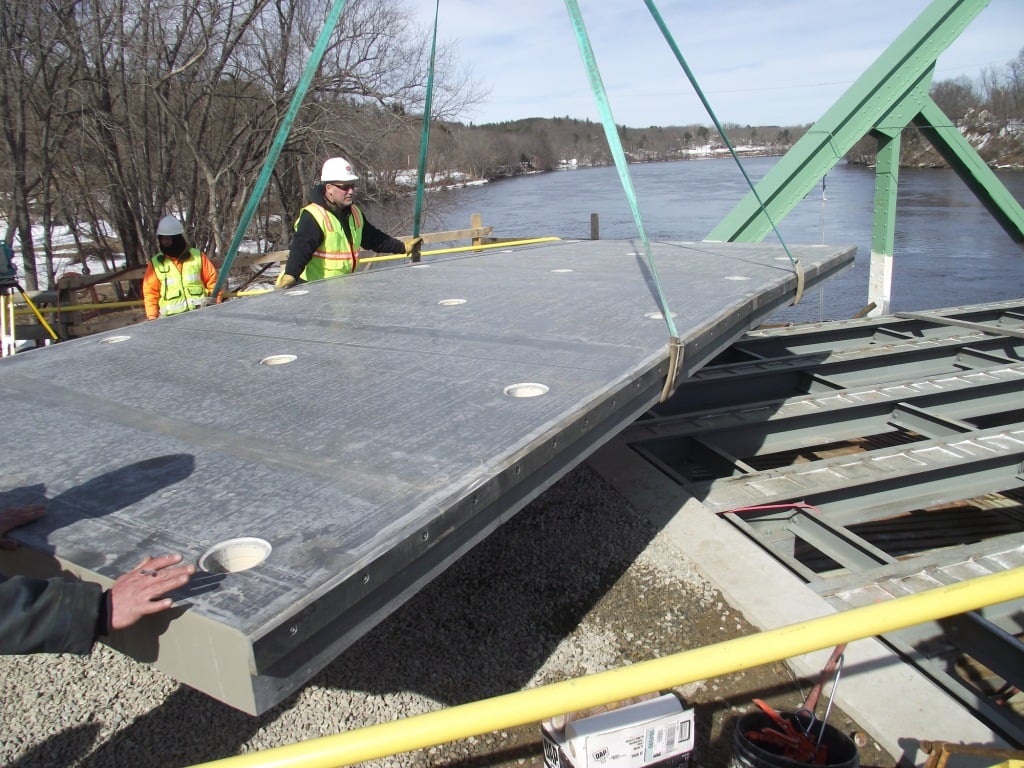
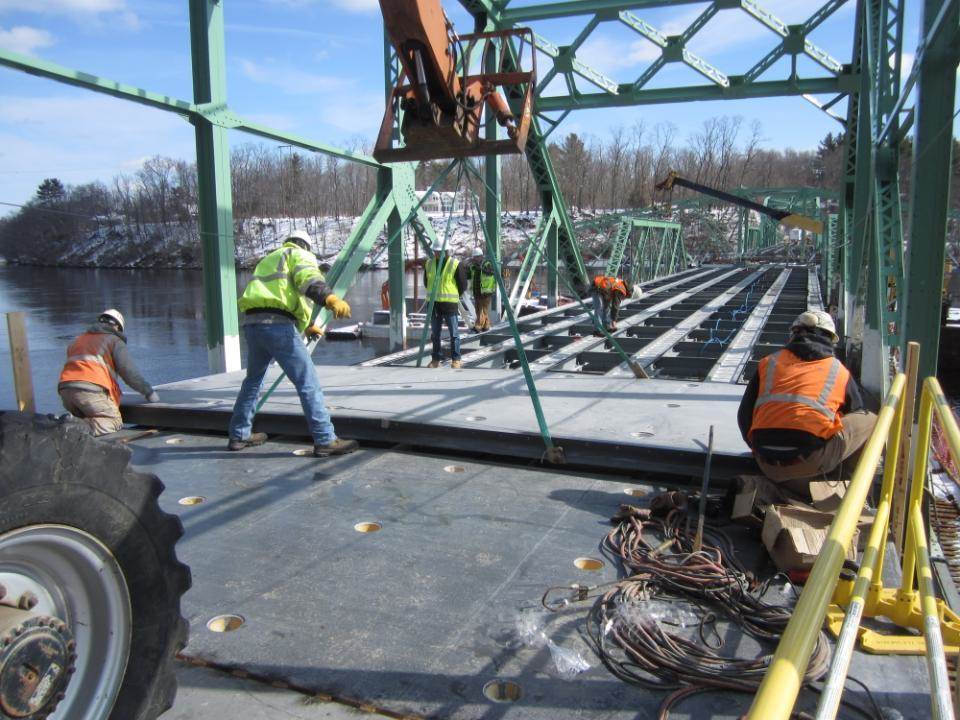
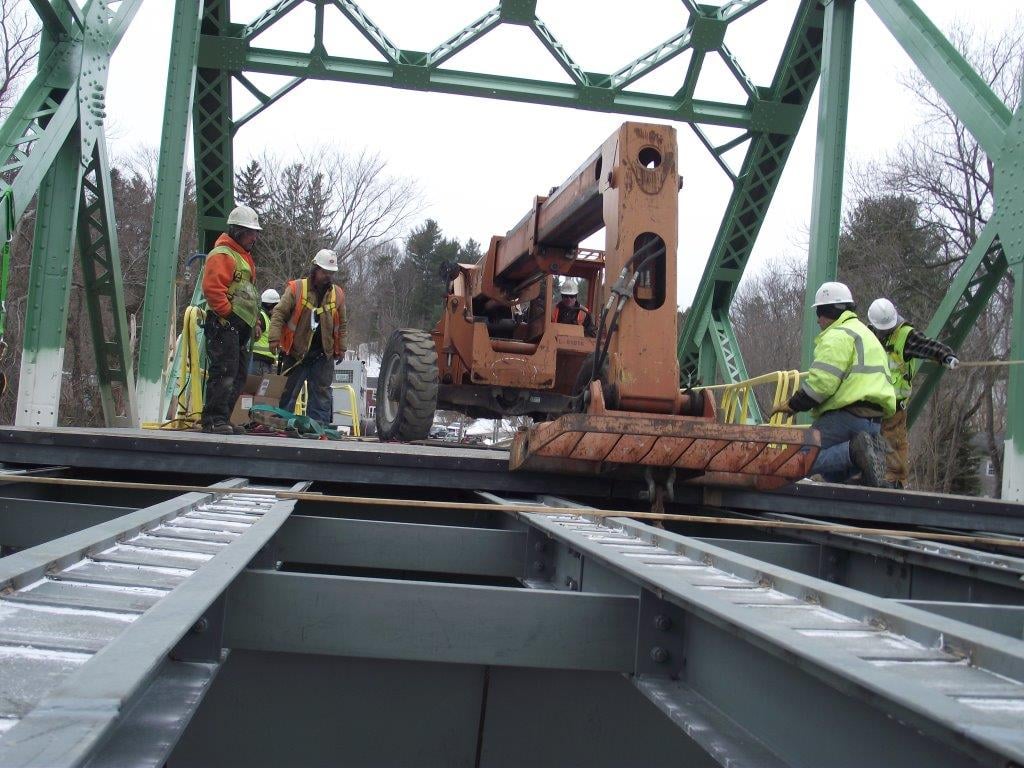
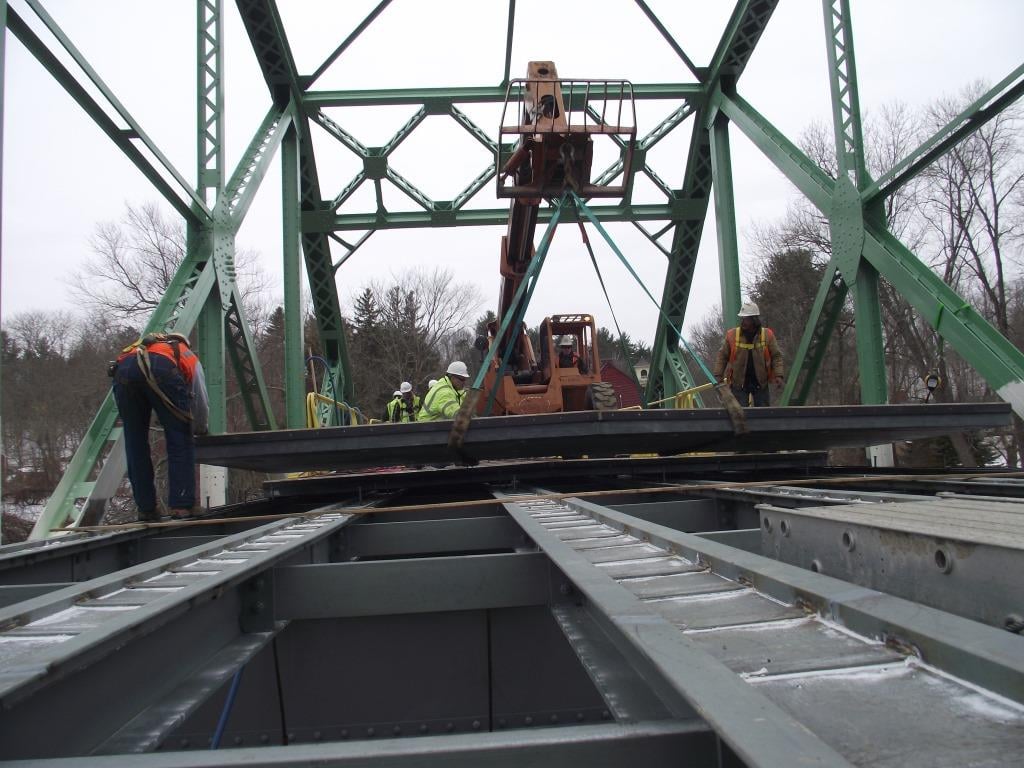
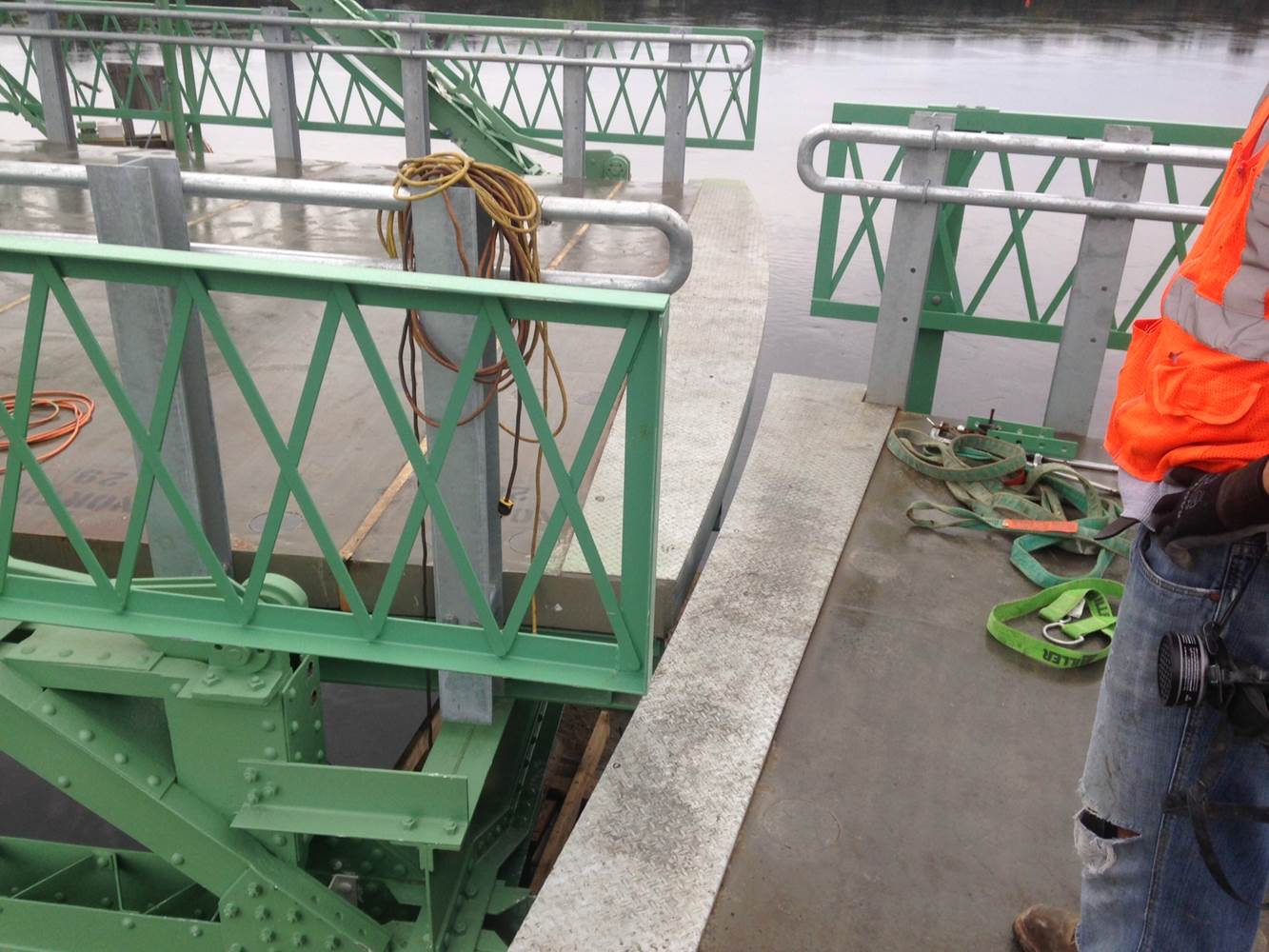
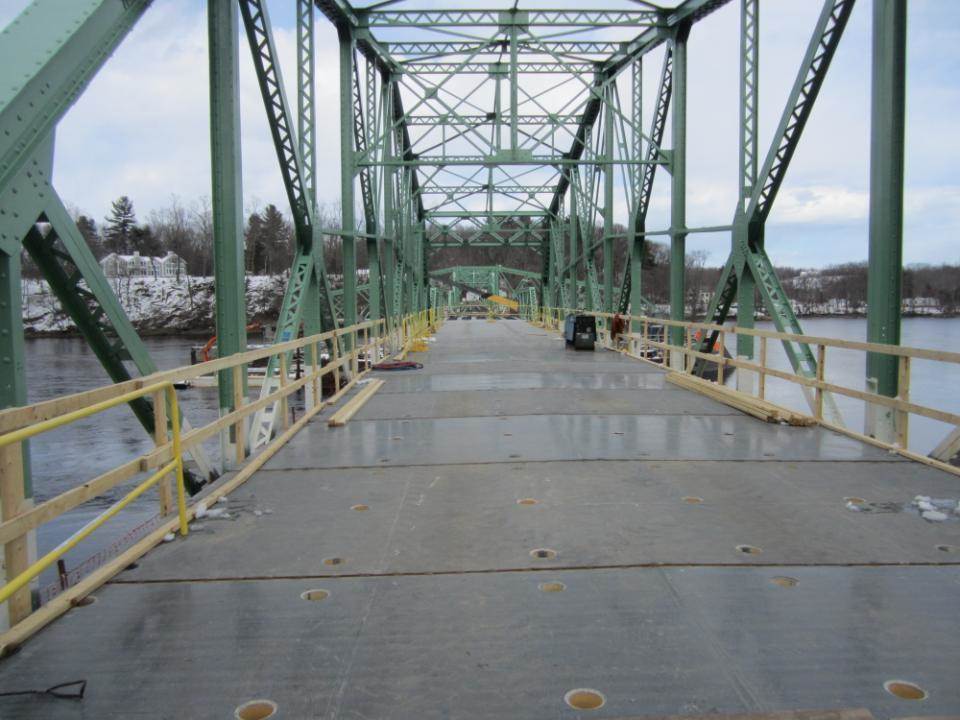
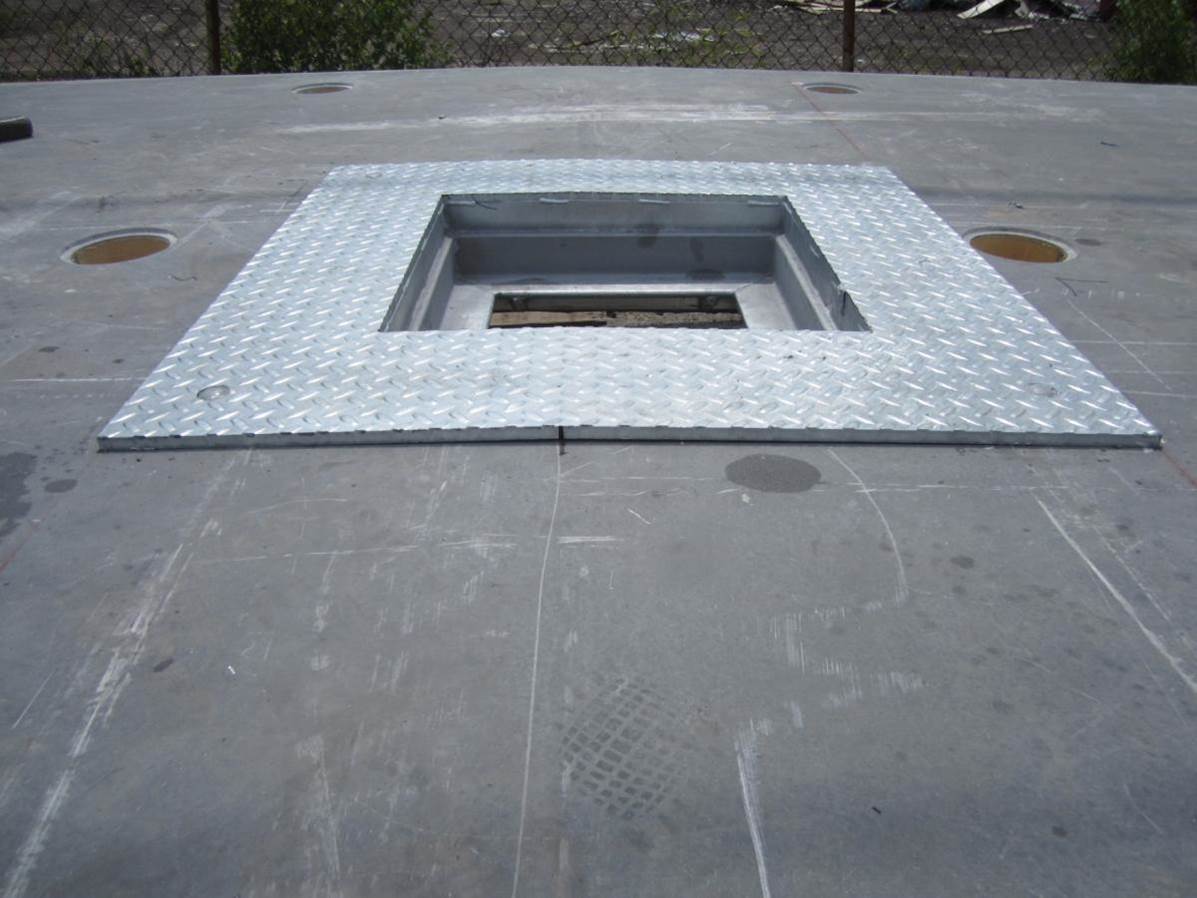
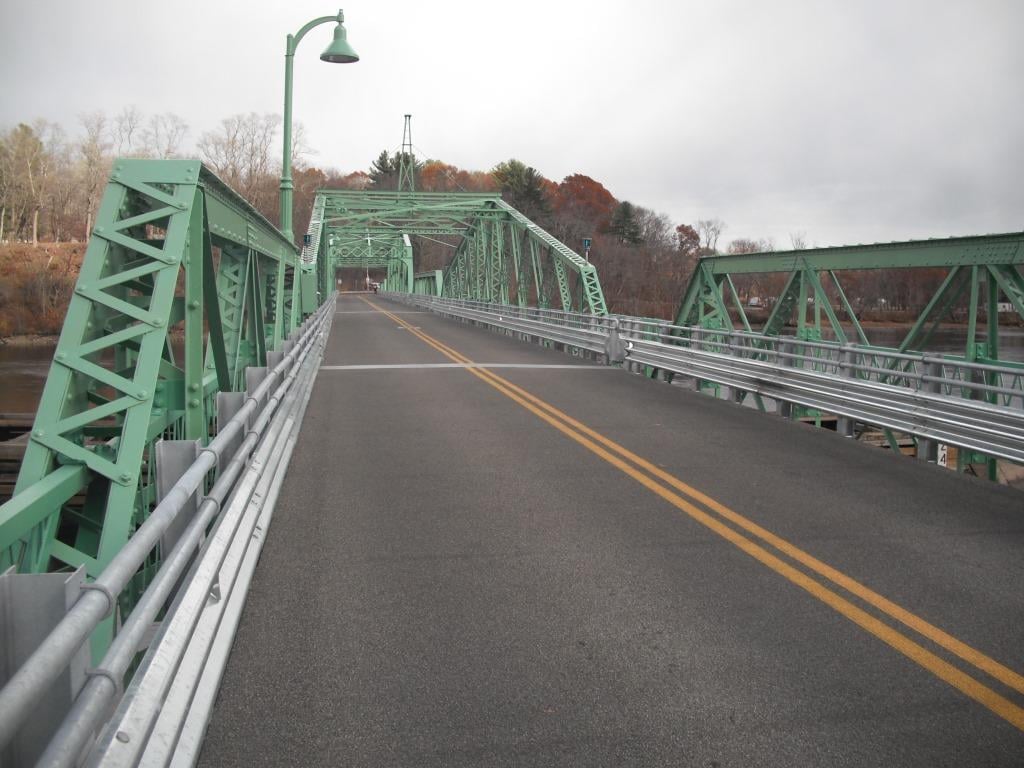
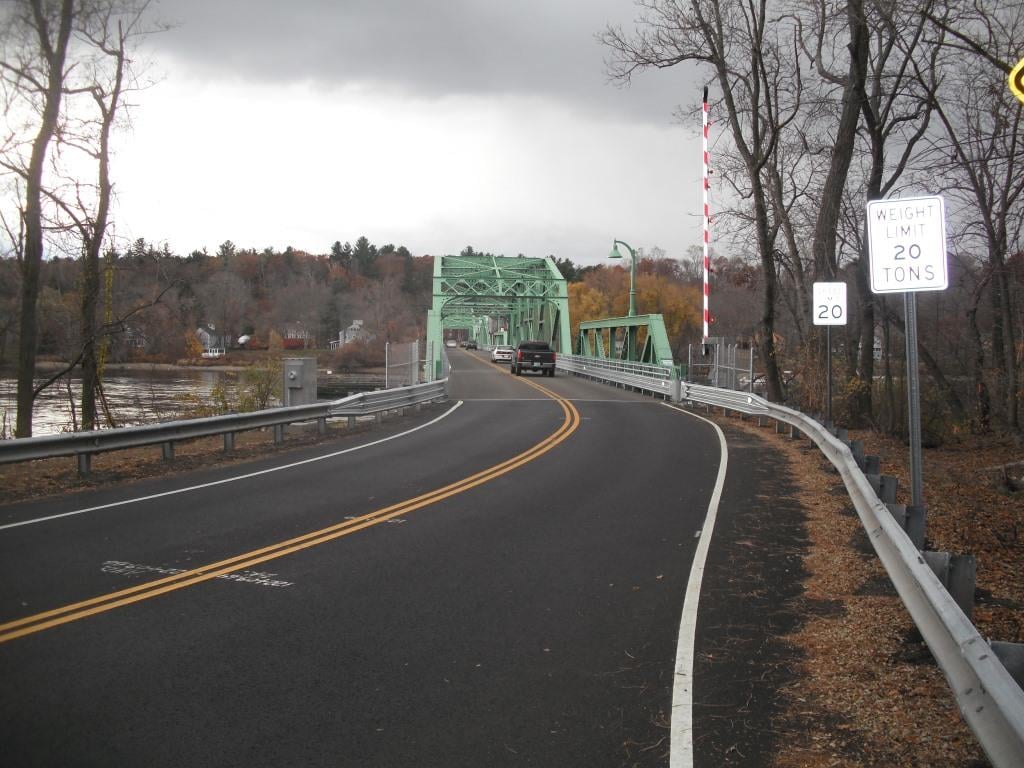
-1.png)
.png)
.png)
